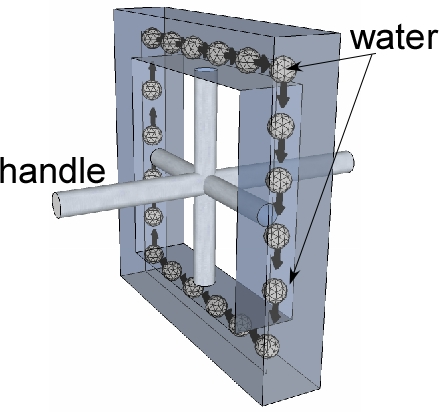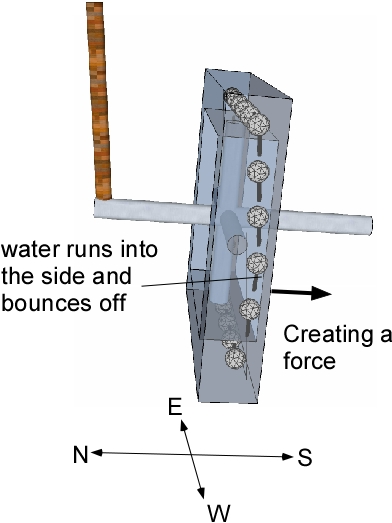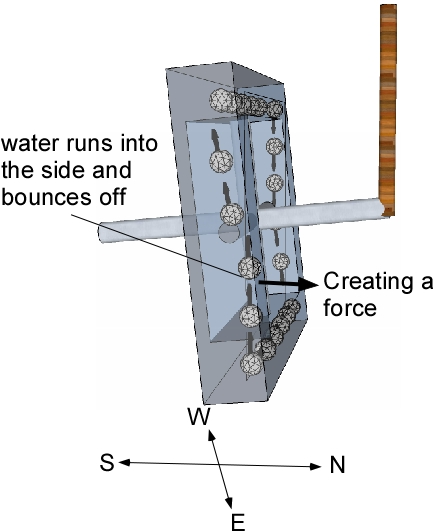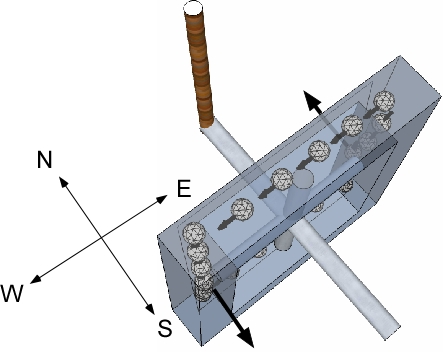Playing with a spinning wheel is fun, but understanding where precession comes from is hard. Vertassium gives it a try, but it is still pretty tough going.
There are a bunch of mathematical ways to think about it using cross products and the like, but Lewis Carroll Epstein gives a good mechanical way of thinking about it in Thinking Physics, and I've expanded it a bit here.
Epstein's ideas is that instead of using a bicycle wheel, let's imagine a much simplified gyroscope. It is a square tube of water, and instead of a wheel turning, the water is flowing in the tube. I've drawn a picture in SketchUp to show that. Email me if you'd like the 3D file.
 Simplified version of a gyroscope
Simplified version of a gyroscope
We tie a rope to the left side and let gravity do its thing. The left side will stay in place but the right side will fall.

The water running along the horizontal sides (top and bottom sides or east-west) are largely unchanged, but the water running vertically runs into the wall and bounces off. That creates a force. To be specific, in the west leg, the water runs into the south side and bounces off to the north. That creates a force on the west leg to the south.
 from the other side
from the other side
The same thing happens on the other side but the water bounces to the south so the force is to the north.
Maybe it is easier to see it from above.  from above
from above